- Hazardous materials employers are required to keep a record of training that each employee has received
- Both of these statements are false
- Your employer or a designated representative is required to provide periodic testing and training
- Both of these statements are true
Quote From Page 86 Of The CDL Manual:
The regulations require training and testing for all drivers involved in transporting hazardous materials. Your employer or a designated representative is required to provide this training and testing. Hazardous materials employers are required to keep a record of that training on each employee as long as that employee is working with hazardous materials, and for 90 days thereafter. The regulations require that hazardous materials employees be trained and tested at least once every three years.
The regulations also require that drivers have special training before driving a vehicle transporting certain flammable gas materials or highway route controlled quantities of radioactive materials. In addition, drivers transporting cargo tanks and portable tanks must receive specialized training. Each driver's employer or designated representative must provide such training.
- A platform or tray on which cargo is placed so that it can be handled as an article.
- A strip of material that may be used to unitize articles and is tensioned and clamped or crimped back upon itself.
- A short piece of material, usually wood, nailed to the deck to reinforce blocking.
- A waterproof sheet used to cover cargo.
Quote From Page 1 Of The CDL Manual:
Tarp:
A waterproof sheet used to cover cargo.
- Twice as likely
- Ten times as likely
- Three times as likely
- Four times as likely
Quote From Page 70 Of The CDL Manual:
More than half of truck driver deaths in accidents are the result of truck rollovers. When more cargo is piled up in a truck, the "center of gravity" moves higher up from the road. The truck becomes easier to turn over. Fully loaded rigs are 10 times more likely to roll over in a crash than empty rigs.
TruckingTruth's Advice:
Rollover accidents are extremely serious! Slow down before your turns, not during the turn. You can always speed up through a turn, but you may not be able to slow down enough to avoid an accident.
- 1/2 inch
- 1/4 inch
- 3/4 inch
- 1 inch
Quote From Page 66 Of The CDL Manual:
Check manual slack adjusters on S-Cam brakes: Park on level ground and chock the wheels to prevent the vehicle from moving. Turn off the parking brakes so you can move the slack adjusters. Use gloves and pull hard on each slack adjuster that you can get to. If a slack adjuster moves more than about one inch where the push rod attaches to it, it probably needs adjusting. Vehicles with too much brake slack can be very hard to stop. Out-of-adjustment brakes are the most common problem found in roadside inspections. Be safe. Check the slack adjusters.
The manual adjustment of automatic slack adjusters is dangerous because it gives the vehicle operator a false sense of security about the effectiveness of the braking system.
TruckingTruth's Advice:
This is a very important figure to memorize. Remember, the slack adjuster, when properly adjusted, should move no more than 1 inch.
- Injects alcohol into the air compressor, keeping moving parts clean and free from debris
- Supplies an alcohol mixture to the brake pads, keeping them clean from foreign debris
- Keeps the air lines free from sand, dirt, and dust
- Helps reduce the risk of ice in air brake valves and other parts during cold weather
Quote From Page 63 Of The CDL Manual:
Alcohol Evaporator - Some air brake systems have an alcohol evaporator to put alcohol into the air system. This helps reduce the risk of ice in air brake valves and other parts during cold weather. Ice inside the system can make the brakes stop working.
Check the alcohol container and fill up as necessary every day during cold weather. Daily air tank drainage is still needed to get rid of water and oil (unless the system has automatic drain valves).
- 14 feet, 6 inches
- 13 feet, 6 inches
- 13 feet
- 12 feet, 9 inches
Quote From Page 10 Of The CDL Manual:
Height
The maximum height for all vehicles on all designated state and federal highways is 13 feet, 6 inches, including load from the underside of the tire to the top of the vehicle. This includes the US Interstate system. Individual states may set their own maximum height limits, but those limits must be equal to or greater than 13 feet, 6 inches.
TruckingTruth's Advice:
Any vehicles exceeding 13 feet, 6 inches in height must obtain proper permits.
- U-Bolts
- Holdbacks
- Spring hangers
- Shackles
Quote From Page 20 Of The CDL Manual:
Left front suspension:
- Condition of spring, spring hangers, shackles, u-bolts.
- Shock absorber condition.
- Make it look pretty
- Prevent damage to the cargo
- Avoid fines and citations
- Prevent loss of load
Quote From Page 1 Of The CDL Manual:
Why?
- Loss of life
- Loss of load
- Damage to the cargo
- Damage to the vehicle
- Issuance of citations/fines to driver/carrier
- The vehicle being placed Out-of-Service.
- A crash
- Depress the clutch and coast through the intersection
- Never change gears while approaching an intersection
- Speed up in order to clear the intersection quicker
- Brake smoothly and, if necessary, change gears
Quote From Page 128 Of The CDL Manual:
As you approach an intersection:
- Check traffic thoroughly in all directions.
- Decelerate gently.
- Brake smoothly and, if necessary, change gears.
- If necessary, come to a complete stop (no coasting behind any stop signs, signals, sidewalks or stop lines, maintaining a safe gap behind any vehicle in front of you.
- Your vehicle must not roll forward or backward.
TruckingTruth's Advice:
While approaching an intersection, if you must slow down, do not coast. Downshift if necessary.
- Be mindful that a safe speed on a curve for a straight truck or a single trailer combination vehicle may be too fast for a set of doubles or triples.
- While taking a tight turn, be sure to brake during the entire turn
- When going around corners, you should make quick movements to swing the rear trailer around directly behind the tractor
- Always put extra pressure on the service brake so that the rear trailer remains directly behind the first trailer
Quote From Page 80 Of The CDL Manual:
Prevent Trailers From Rolling Over - To prevent trailers from rolling over, you must steer gently and go slowly around corners, on ramps, off ramps and curves. A safe speed on a curve for a straight truck or a single trailer combination vehicle may be too fast for a set of doubles or triples.
TruckingTruth's Advice:
When it comes to driving doubles or triples, everything you do should be slower and smoother than driving a vehicle with only one trailer.



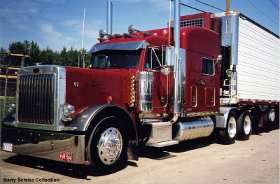
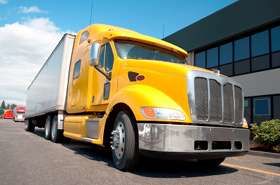

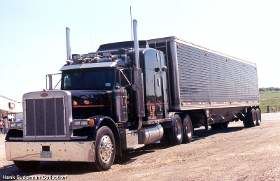
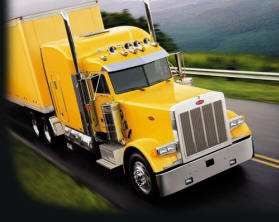
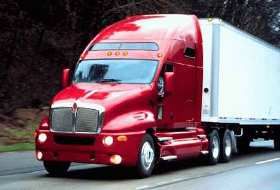
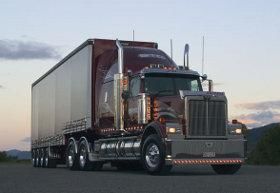
 ) to help you understand the materials better and gain an understanding for how that knowledge will fit into the overall picture.
) to help you understand the materials better and gain an understanding for how that knowledge will fit into the overall picture.
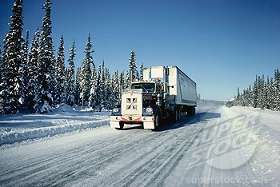
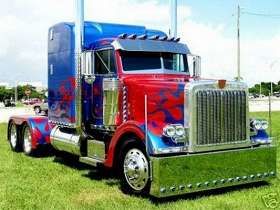
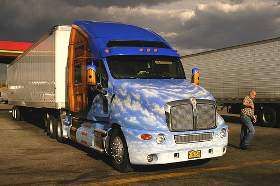

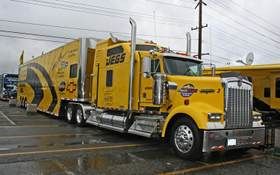
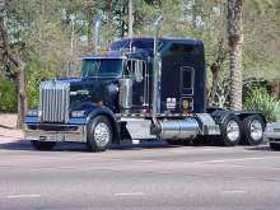


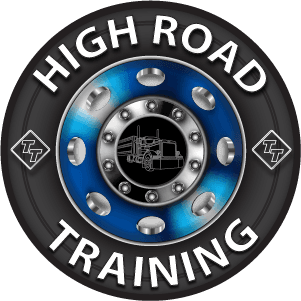



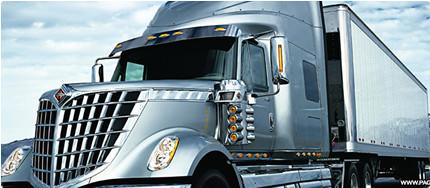
 TT On Facebook
TT On Facebook